manual recliner vs power recliner
Summary
Discover the differences between manual and power recliners. Compare comfort, ease of use, and durability to find your perfect chair.
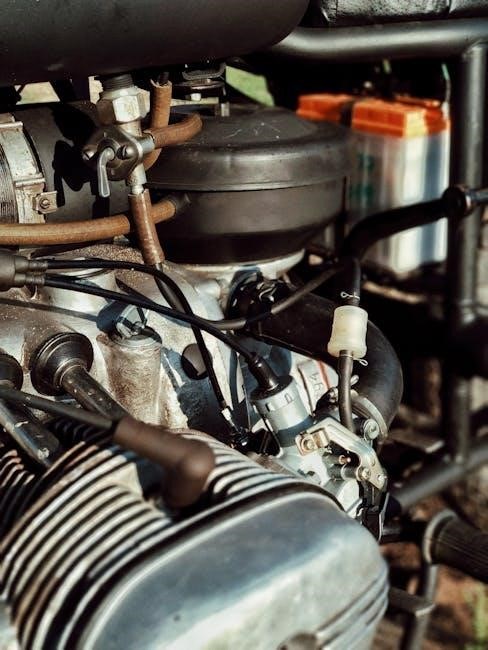
Manual and power recliners offer distinct comfort solutions‚ catering to different needs. Manual recliners operate via levers or push-back mechanisms‚ providing simplicity and no power requirements. Power recliners‚ with motorized adjustments‚ offer effortless customization and convenience‚ ideal for those seeking ease of use. Both options prioritize comfort but differ in functionality and user experience.
Importance of Choosing the Right Recliner
Selecting the right recliner is crucial for optimal comfort‚ support‚ and relaxation. A well-chosen recliner can enhance your lifestyle by providing the perfect spot to unwind‚ read‚ or even sleep. It also plays a significant role in maintaining proper posture and alleviating back pain. With varying needs and preferences‚ the choice between manual and power recliners can greatly impact your daily comfort. Manual recliners offer simplicity and affordability‚ while power recliners provide advanced features and ease of use. Considering factors like durability‚ space‚ and personal health needs ensures a satisfying long-term investment. A recliner that aligns with your lifestyle and preferences can significantly improve your overall well-being and happiness.
Brief Overview of Manual Recliners
Manual recliners are traditional‚ non-motorized furniture pieces that rely on mechanical mechanisms to adjust positions. They typically feature a lever or a push-back design‚ allowing users to recline by applying manual force. These recliners are known for their simplicity‚ durability‚ and affordability. Without the need for electricity‚ manual recliners are energy-efficient and operate quietly. They are often preferred by those who value straightforward functionality and classic design. While they may lack the advanced features of power recliners‚ manual recliners provide reliable comfort and support‚ making them a practical choice for many users. Their ease of maintenance and timeless appeal continue to make manual recliners a popular option for everyday use.
Brief Overview of Power Recliners
Power recliners are modern‚ motorized seating solutions designed for ultimate convenience and comfort. They operate with the touch of a button‚ allowing users to adjust their position effortlessly. These recliners often feature advanced functionalities such as infinite positioning‚ where users can stop at any desired angle. Power recliners are ideal for individuals seeking ease of use‚ especially those with mobility challenges. They typically require a power source and may include additional features like heat‚ massage‚ or adjustable lumbar support. While they are generally more expensive than manual recliners‚ their automation and customizable comfort make them a popular choice for those prioritizing convenience and relaxation. Their sleek designs and technological integration cater to contemporary living spaces‚ offering a blend of style and functionality.
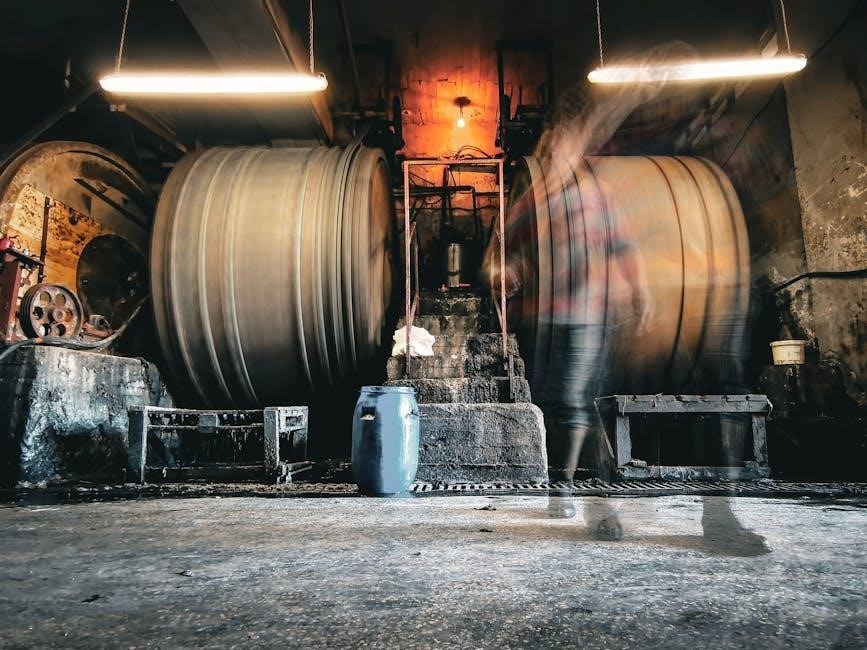
Basic Functionality
Manual recliners rely on mechanical mechanisms‚ such as levers or push-back actions‚ to adjust positions. Power recliners use electric motors for smooth‚ automated adjustments‚ eliminating manual effort.
How Manual Recliners Operate
Manual recliners function through simple mechanical mechanisms‚ typically involving a lever or handle located on the side. Users adjust the chair by pulling the lever or gently pushing back to recline. This system relies on the user’s physical effort‚ making it straightforward and reliable. The absence of complex components ensures durability and minimizes maintenance. Manual recliners do not require electricity‚ offering a cost-effective and energy-efficient solution. They are also lightweight and space-efficient‚ suitable for smaller areas. While they may lack the convenience of power recliners‚ manual models provide a classic‚ no-frills experience that many users appreciate for its simplicity and ease of use.
How Power Recliners Operate
Power recliners operate using a motorized mechanism controlled by a button or remote‚ eliminating manual effort. With a simple press‚ users can adjust the chair’s position smoothly and precisely. These recliners often feature multiple motors‚ allowing independent movement of the backrest and footrest for customizable comfort. Some models include additional features like heat‚ massage‚ or USB ports for enhanced relaxation. Power recliners require a power source‚ ensuring consistent and effortless operation. They are ideal for individuals seeking convenience and ease of use‚ offering a modern and luxurious alternative to traditional manual recliners. This advanced functionality makes power recliners a popular choice for those prioritizing comfort and automation.

Comparison of Ease of Use
Manual recliners require physical effort to adjust‚ while power recliners offer effortless‚ button-controlled operation‚ making them more convenient for users seeking ease and minimal exertion.
Manual Recliners: Simplicity and Mechanism
Manual recliners are designed with simplicity in mind. They typically operate using a lever or a gentle push-back mechanism‚ requiring minimal effort to adjust the backrest and footrest. This mechanical system ensures reliability and eliminates the need for electricity‚ making them a practical choice for those who value straightforward functionality. The absence of complex electronics means manual recliners are generally easier to maintain and repair. They also tend to be lighter in weight‚ which can be advantageous for rearranging furniture. However‚ the manual operation may require some physical effort‚ which could be a drawback for individuals with mobility issues. Their simplicity‚ though‚ often results in a longer lifespan and reduced risk of mechanical failure compared to motorized alternatives.
Power Recliners: Convenience and Automation
Power recliners deliver unparalleled convenience through automated adjustments. Equipped with motors‚ these recliners allow users to effortlessly customize their position with the touch of a button or remote control. This eliminates the need for manual effort‚ making them ideal for individuals seeking ease and comfort. Power recliners often feature precise angle adjustments‚ enabling users to find their perfect seating or reclining position. Additionally‚ many models include advanced features such as heat‚ massage‚ and memory settings‚ further enhancing the user experience. The automation ensures smooth transitions between positions‚ providing a luxurious and relaxing experience. This level of convenience makes power recliners a popular choice for those prioritizing ease of use and modern technology.
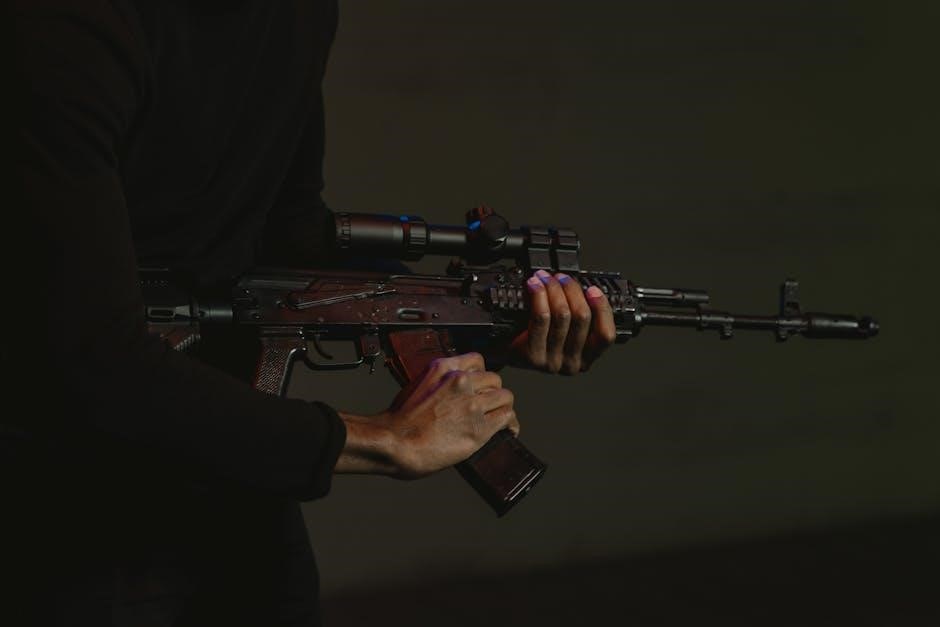
Comfort and Support
Manual recliners provide sturdy support through traditional mechanisms‚ while power recliners offer customizable positioning for tailored comfort‚ catering to individual preferences and ergonomic needs effectively.
Manual Recliners: Support and Adjustability
Manual recliners provide reliable support through their robust‚ often Spring-based mechanisms‚ ensuring a stable seating experience. They typically feature adjustable backrests and footrests operated by levers or push-back functions‚ allowing users to customize their comfort within limits. While they may lack the precision of power recliners‚ manual recliners excel in simplicity and durability‚ requiring minimal maintenance. Their space-efficient designs make them ideal for smaller rooms. However‚ manual recliners may not offer the same level of ergonomic customization as their power counterparts‚ potentially limiting comfort for users with specific mobility needs. Despite this‚ they remain a practical choice for those prioritizing traditional design and ease of use without relying on electricity.
Power Recliners: Customizable Comfort
Power recliners excel in offering customizable comfort through advanced motorized mechanisms‚ allowing users to adjust positions with precision. With features like infinite positioning‚ these recliners enable individuals to stop at any desired angle‚ ensuring personalized relaxation. Many models include memory settings‚ saving preferred positions for effortless recall. This level of adjustability is particularly beneficial for users seeking ergonomic support or those with mobility challenges. Additionally‚ power recliners often come with extra features such as heat‚ massage‚ and adjustable lumbar support‚ enhancing overall comfort. While they may require a power source and are generally more expensive than manual recliners‚ their ability to tailor comfort to individual needs makes them a popular choice for those prioritizing convenience and luxury.

Customization Features
Manual recliners offer basic adjustments‚ while power recliners provide advanced customization options‚ including memory settings‚ adjustable lumbar support‚ and precise positioning for tailored comfort.
Manual Recliners: Limited Adjustments
Manual recliners provide essential comfort with simple mechanisms‚ typically featuring a lever or push-back operation. While they offer decent support‚ adjustments are limited‚ often allowing only a few fixed positions. This lack of precision may not suit users needing tailored comfort. However‚ their straightforward design ensures reliability and ease of use without requiring power. For those valuing simplicity and manual control‚ these recliners remain a practical choice‚ balancing functionality with a classic‚ no-frills approach to relaxation.
Power Recliners: Infinite Positioning
Power recliners stand out for their ability to offer infinite positioning‚ allowing users to customize their comfort with precise adjustments. Unlike manual recliners‚ power models enable smooth transitions between positions‚ from upright to fully reclined‚ with minimal effort. This feature is particularly beneficial for individuals seeking tailored support and relaxation. The motorized mechanism ensures seamless control‚ often via a remote or button‚ making it easier for users with mobility challenges. Additionally‚ some power recliners come with memory settings‚ enabling users to save their preferred positions for convenience; This level of adjustability enhances the overall comfort experience‚ catering to a wide range of needs and preferences‚ from casual relaxation to therapeutic support.
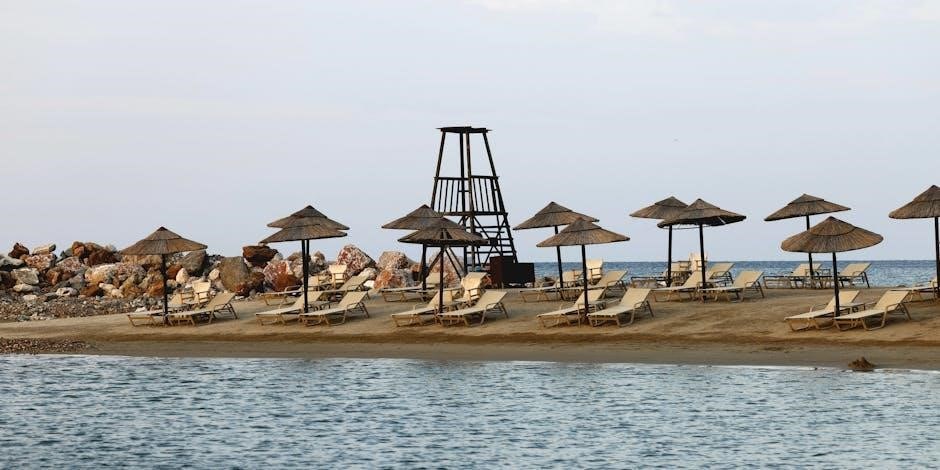
Durability and Maintenance
Manual recliners are known for their simplicity and longevity‚ requiring minimal maintenance. Power recliners‚ while durable‚ need occasional motor checks to ensure smooth operation and longevity.
Manual Recliners: Longevity and Simplicity
Manual recliners are celebrated for their straightforward design and durability. Operating without motors‚ they rely on mechanical mechanisms‚ reducing the risk of mechanical failure. This simplicity contributes to their longevity‚ as there are fewer components that can wear out over time. Maintenance is minimal‚ typically involving occasional lubrication of hinges or tightening of bolts. Their lack of reliance on electricity means they can be used anywhere‚ without concerns about power outages or cord management. Over the years‚ manual recliners have proven to be a reliable choice for those prioritizing ease of maintenance and enduring performance. Their classic‚ uncomplicated construction ensures they remain functional and comfortable for extended periods.
Power Recliners: Motorized Durability
Power recliners are designed with motorized mechanisms‚ offering smooth‚ controlled movements. While their motors introduce more complexity‚ advancements in technology have improved their durability. Reputable brands ensure motors are built to last‚ with some offering extended warranties. Regular maintenance‚ such as ensuring proper electrical connections and cleaning moving parts‚ can extend the lifespan. Unlike manual recliners‚ power models minimize effort‚ making them ideal for individuals with mobility issues. Their robust construction and efficient motors provide lasting performance‚ delivering comfort and convenience over years of use. Despite higher initial costs‚ their durability often justifies the investment for long-term enjoyment.
Cost Considerations
Manual recliners are generally more affordable‚ with prices starting lower due to simpler mechanisms. Power recliners‚ featuring motorized systems‚ are pricier but offer advanced functionality. Costs vary by brand‚ materials‚ and additional features‚ making power recliners a higher investment for enhanced convenience and customization.
Price Range of Manual Recliners
Manual recliners typically range from $150 to $800‚ depending on the brand‚ quality‚ and features. Basic models with essential functionality are more affordable‚ often priced between $150 and $300. Mid-range options‚ offering better materials and slightly more adjustability‚ fall between $300 and $500. Premium manual recliners‚ crafted with high-quality fabrics or leather‚ can cost up to $800. While they are generally more budget-friendly than power recliners‚ higher-end manual models may approach the price of entry-level power recliners. This makes manual recliners a cost-effective choice for those seeking simplicity and durability without advanced features.
Price Range of Power Recliners
Power recliners generally range from $500 to $2‚000‚ reflecting their advanced features and motorized functionality. Entry-level models with basic motorized adjustments start around $500 to $800. Mid-range power recliners‚ offering additional features like adjustable headrests or USB ports‚ typically fall between $800 and $1‚200. High-end models‚ equipped with premium materials‚ advanced ergonomics‚ and smart technology integration‚ can cost up to $2‚000. The price increases with the number of motors and customization options‚ such as dual-motor systems allowing independent backrest and footrest adjustments. While power recliners are more expensive than manual ones‚ they provide superior convenience and adaptability‚ making them a worthwhile investment for those prioritizing comfort and ease of use.
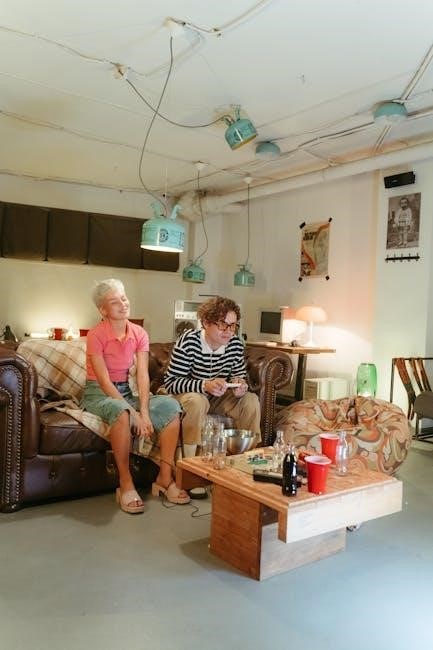
Key Differences in Features
Manual recliners rely on levers or push-back mechanisms for adjustment‚ offering simplicity and no power dependency. Power recliners feature motorized controls‚ enabling precise‚ customizable positioning with added features like heat and massage.
Manual vs. Power: Core Feature Differences
Manual recliners operate via levers or push-back mechanisms‚ offering simplicity and no reliance on electricity. They are often more affordable and lightweight‚ making them easier to move. Power recliners‚ on the other hand‚ use motorized controls for smooth‚ precise adjustments‚ often including additional features like heat‚ massage‚ and customizable positioning. Power recliners typically require a power source and may offer advanced technologies such as programmable settings or wireless controls. While manual recliners provide a classic‚ straightforward experience‚ power recliners cater to those seeking convenience and modern comfort. The choice between the two ultimately depends on personal preferences‚ lifestyle‚ and the level of customization desired.
Manual vs. Power: Aesthetics and Design
Manual and power recliners differ in aesthetics and design‚ catering to various home decors. Manual recliners often feature a minimalist‚ classic look with clean lines‚ blending seamlessly into traditional or rustic settings. Their compact designs make them space-efficient‚ appealing to those who prefer simplicity. Power recliners‚ while equally stylish‚ frequently incorporate modern elements like sleek buttons‚ touch controls‚ or wireless remotes. Some models offer advanced design features such as adjustable armrests or built-in cup holders‚ enhancing functionality without compromising style. Power recliners may have a slightly bulkier appearance due to motors‚ but their contemporary designs suit modern interiors. Both options come in a variety of fabrics and finishes‚ allowing users to choose based on their interior preferences and lifestyle needs.
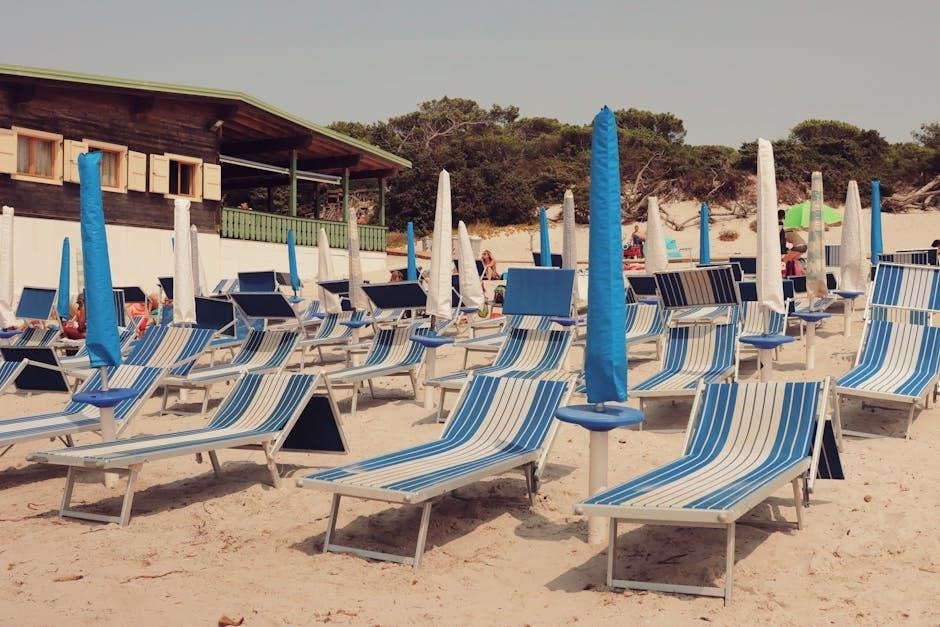
Space and Design Requirements
Manual and power recliners have different space needs. Manual recliners are compact‚ ideal for smaller rooms‚ while power recliners require more space and access to power outlets.
Manual Recliners: Space Efficiency
Manual recliners are known for their space efficiency‚ making them ideal for smaller living areas. Their compact design allows easy placement in cozy rooms without compromising comfort. Unlike power recliners‚ they don’t require additional space for movement or power outlets‚ fitting neatly into corners or against walls. Their lightweight construction also makes them easy to rearrange‚ offering flexibility in home decor. This practicality ensures they suit various interior settings‚ providing both functionality and style. Their straightforward design blends seamlessly into any room‚ making them a popular choice for those prioritizing space optimization without sacrificing relaxation.
Power Recliners: Design and Space Needs
Power recliners often require more space due to their motorized mechanisms and adjustable features. Their design typically includes a base that allows for smooth reclining‚ which may need clearance from walls or other furniture. Additionally‚ power recliners usually need proximity to electrical outlets‚ limiting placement options. While they offer superior comfort and customization‚ their bulkier frames and functional needs can make them less ideal for smaller spaces. However‚ modern designs are becoming more compact‚ aiming to balance comfort with space efficiency. Despite these considerations‚ power recliners remain a popular choice for those who prioritize convenience and advanced features‚ even if it means accommodating their spatial requirements.
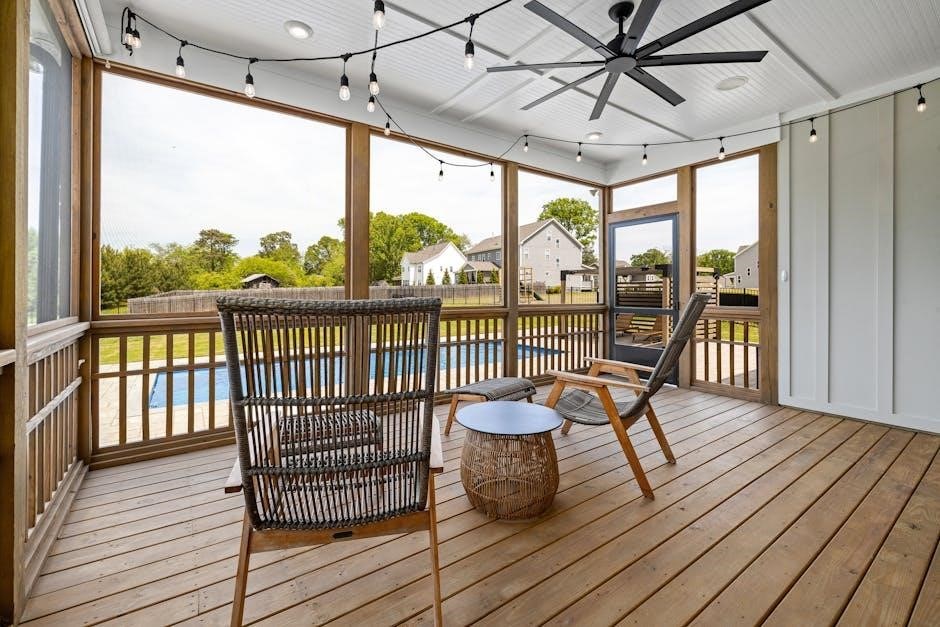
Special Features and Technologies
Power recliners often include advanced features like adjustable positions‚ massage settings‚ and heat functions‚ enhancing comfort. Manual recliners focus on simplicity‚ offering classic‚ uncomplicated relaxation without extra technology.
Additional Features in Power Recliners
Power recliners often come with advanced features that enhance comfort and convenience. These may include adjustable positions‚ massage settings‚ and heat functions‚ allowing users to customize their experience. Some models offer USB ports for charging devices‚ while others feature built-in cup holders or storage compartments. Certain power recliners also include memory settings‚ enabling users to save their preferred positions. These technologies cater to diverse needs‚ providing tailored relaxation and entertainment options. Additionally‚ some power recliners incorporate silent motors and smooth transitions‚ ensuring a peaceful environment. These extra features make power recliners a versatile choice for those seeking modern‚ high-tech comfort solutions‚ setting them apart from manual recliners in terms of innovation and functionality.
Manual Recliners: Classic Simplicity
Manual recliners embody classic simplicity‚ offering a timeless design that prioritizes functionality without modern gadgets. These recliners operate using basic mechanisms‚ such as levers or push-back systems‚ requiring no electricity or complex controls. Their straightforward design ensures reliability and ease of maintenance‚ making them a practical choice for many users. Manual recliners often feature clean‚ traditional aesthetics that blend seamlessly with various interior styles. While they may lack the advanced features of power recliners‚ they provide a no-frills‚ dependable comfort solution. For those who value simplicity and prefer a more traditional approach to relaxation‚ manual recliners remain a popular and enduring option‚ offering a quiet‚ low-maintenance way to unwind and enjoy comfort in its purest form.

Customer Needs and Preferences
Customer needs and preferences play a crucial role in choosing between manual and power recliners. Users seeking simplicity and affordability often opt for manual recliners‚ while those prioritizing ease and advanced features lean toward power recliners.
Who Benefits Most from Manual Recliners?
Manual recliners are ideal for individuals seeking simplicity and affordability. They suit those who prefer traditional designs‚ lack access to power outlets‚ or have limited space. These recliners are perfect for casual users who value ease of use without advanced features. Their mechanical operation ensures reliability and longevity‚ appealing to people who appreciate straightforward functionality. Additionally‚ manual recliners are a great option for those on a budget‚ as they are generally more cost-effective than power recliners. They also cater to individuals who prefer a more hands-on‚ non-technological approach to relaxation‚ making them a practical choice for everyday use in homes of all sizes.
Who Benefits Most from Power Recliners?
Power recliners are ideal for individuals seeking convenience‚ customization‚ and advanced comfort. They are perfect for people with mobility challenges‚ as they eliminate the need for physical effort. Tech-savvy users who value modern features like adjustable positions‚ heat‚ and massage functions will appreciate the sophistication. Those who prioritize relaxation and wish to unwind with minimal effort also benefit greatly. Additionally‚ power recliners are a great choice for individuals willing to invest in premium comfort and durability. Their ability to offer infinite positioning makes them suitable for users who want a tailored experience. Overall‚ power recliners cater to those who value ease of use‚ cutting-edge technology‚ and unparalleled comfort‚ making them a worthwhile investment for long-term satisfaction.
Ultimately‚ the choice between manual and power recliners depends on personal preferences‚ lifestyle‚ and specific needs‚ ensuring optimal comfort and satisfaction for every individual user.
Final Thoughts on Manual vs. Power Recliners
When deciding between manual and power recliners‚ consider factors like ease of use‚ customization‚ and maintenance; Manual recliners are ideal for simplicity and cost-effectiveness‚ while power recliners offer advanced features and convenience‚ especially for those with mobility issues. Both options provide comfort but cater to different lifestyles. Assessing personal needs and preferences will guide the best choice‚ ensuring long-term satisfaction and optimal relaxation.